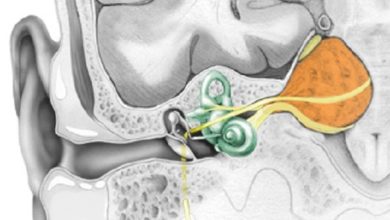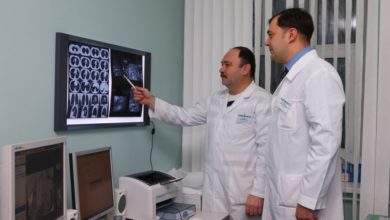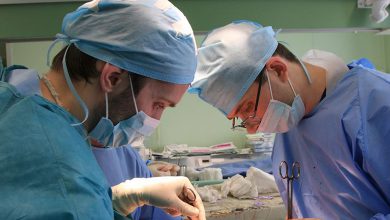Benign brain tumor
The content of the article
Many people think about the question: “What is a benign brain tumor, symptoms and how long do they live with such a disease?” This disease is an abnormal growth that occurs in the brain. In the process of its development, the formed cells that make up the tissues take part.
A special type of neoplasm is suitable for any type of tissue. For example, a schwannoma is created due to Schwann cells. They form a sheath covering the surface of the nerve; ependyoma is created by the cells lining the ventricle of the brain; meningioma is formed due to the presence of cells that make up the lining of the brain or the tissue surrounding it; adenoma is created due to glandular cells and so on.
There are benign brain tumors that are hereditary:
- Craniopharyngioma chordoma;
- germinoma;
- teratoma;
- dermoid cyst;
- angioma.
Meningioma is a benign neoplasm of the brain characterized by recurrence. Despite its removal.
A very large number of benign brain tumors changes his intellectual abilities for the worse. These types of tumors do not contain cancer cells. They are characterized by weak growth, but this is not at all reassuring, since as their size increases, other areas of the brain are compressed, which activates swelling, the growth of inflammation of healthy nerve tissue, and also increases the pressure inside the skull.
Very rarely, a process of transformation of a neoplasm into a malignant one occurs. Then the therapy takes on a completely different character.
Diagnosis of the disease
Before specifically diagnosing the presence of a tumor in the brain, the patient is advised to undergo several examinations:
- Neurological.
- Examine your vision. During the examination, be sure to look at the bottom of the eyeball.
- The vestibular apparatus is controlled.
- Hearing, smell and taste are also tested.
Diagnosis methods:
- EEG (electroencephalography). When using this diagnostic technique, the presence of general and local modifications in the human brain is revealed.
- X-ray, MRI . It will help to identify the location of the tumor and its features.
- Lab tests. With their help, cerebrospinal fluid is examined and confirmation of the specific features of the neoplasm is obtained.
Disease factors
One of the main reasons for the appearance of neoplasms, including all of the listed types, is exposure to radiation. This reality is proven by observations carried out on children suffering from a disease such as ringworm of the scalp, which is accompanied by infections associated with the fungus. Therapy for this disease involves the use of small doses of radiation treatment.
Many of these babies were then confirmed to have a benign tumor in the brain. Current methods of treating malignant tumors also involve the use of radiation, which activates the appearance of benign tumors.
Some experts think that a colorless gas, for example, vinyl chloride, can provoke the growth of these types of formations. It is used in the manufacture of plastic items, so those who work in such production are susceptible to its negative effects.
Long-term use of granulated sugar substitute may also be a factor influencing the appearance of benign tumors. One of the modern reasons may be the electromagnetic field of cell phones or high-voltage power lines.
A benign neoplasm, in contrast to a malignant one, is characterized by the following features:
- It appears only within the boundaries that form the brain tissue and does not grow in other organs.
- Slow growth.
- Signs differ depending on the location of the tumor.
- It is formed from the tissue of which it is composed.
Specificity of the disease depending on the type of neoplasm
Meningioma is considered to be one of the most famous benign neoplasms. It is diagnosed in 20% of all cases of this type of disease. The tissue from which the spinal cord and the hard shell of the brain are formed takes part in the process of its development.
A neoplasm of the pituitary gland is a very rare disease during which the production of pituitary enzymes occurs. Studies say that only one person in every thousand may get it. This is approximately 15% of all cases of this type of disease.
Hemangioblastoma is a cystic brain tumor. It is benign and formed from vascular tissue. Epithelial cells serve as the basis for the formation of dermoid and epidermoid cysts. These are very rare brain tumors that are not considered benign by many experts, but their developmental effects on the brain and its function are similar.
Symptoms of the disease
The first symptoms of the presence of a benign formation in the brain are very weak and most often do not cause alarm. In the process of development, its value becomes larger, a slight pressure occurs on certain areas of the brain, which awakens symptoms.
Signs of a benign brain tumor usually include problems with hearing, vision and taste. Balance or coordination of the musculoskeletal system may change. Mental functions such as concentration, changes in memory and speech may also be affected. Sudden spasms and twitching of every part of the muscle may occur. The patient often feels nauseous or suddenly vomits, develops headaches, and loses sensation in his legs and arms. Complete or partial facial paralysis may occur.
Pathologies
A benign neoplasm in the brain is characterized by certain risks and pathologies, as a result of which, like any other disease, it requires appropriate therapy, which cannot be delayed. An operation performed at the wrong time can cause compression of certain areas of the brain, which can deform vital or functionally significant tissues. Then the pathologies can be fatal.
The presence of unexpected seizures can be a factor in damage to brain tissue. The operation process may be accompanied by the appearance of bleeding, which has negative signs and pathologies after surgery.
The growth of a tumor can be stopped in various ways. All types of these tumors are amenable to surgery and are therefore safe. Their unpleasant feature is the likelihood of a benign neoplasm changing into a malignant one.
Therapy
Treatment of a brain tumor does not involve chemotherapy. Signs of illness require the development of a personalized chart for the individual patient. It affects the patient’s condition and the presence of any additional diseases.
The main method of treating benign formations is craniotomy surgery, the essence of which is to open the skull, during which the formation is dissected. Radiation treatment is then used to remove residual signs of the disease. Usually, the classic type of radiation treatment is used - remote therapy, but sometimes proton treatment or radiosurgery is used - cyber or gamma knife therapy.
Medication treatment involves the use of corticosteroids, which can reduce swelling of the brain tissue and eliminate certain signs.
The use of proton treatment is a more effective way of acting on a tumor. It helps to remove certain types of formations completely without deforming nearby tissues. Pathologies are not typical for such treatment. After completing this treatment method, the patient can immediately lead his usual lifestyle.
Proton treatment when acting on a benign tumor reduces the use of radiation doses by up to 50%, which makes it possible to minimize the harm caused to hormonal and neurocognitive functions. The risk of a secondary tumor is almost halved; the auditory organs, visual organs and the central nervous system receive minimal radiation. Today there are no types of incurable benign tumors in the brain, but there are cases when not all signs or pathologies can be removed, for example, problems with speech may remain, and vision will not be fully restored.
How long can you live with a tumor?
Many patients diagnosed with a brain tumor are interested in the question: “What is the life expectancy with such a disease?” Very often, medical experts talk about a 5-year survival limit.
The outcome of surgical intervention is considered effective if the patient has passed this mark. However, longer periods of life also occur. Each statistic when determining survival time is based on the growth of a tumor in the brain.
Stages of tumor growth
- Visiting a doctor if the initial symptoms of the disease occur: pain in the head, nausea and vomiting, change in gait, etc. This will allow you to perform a surgical operation and remove the tumor partially or completely.
- Monitoring when visiting a doctor is less positive. The affected cell structure begins to actively divide and put pressure on nearby tissues. At this stage, surgery may no longer be appropriate. The patient's age and personal characteristics of his body also matter. After 65 years of age, a patient who has undergone surgery, chemotherapy and radiation treatment has a greatly reduced chance of survival.
- A neoplasm at the third stage of development is very often inoperable . The patient can live with a tumor at this stage for no more than 2 years. The development of education proceeds quickly, the patient loses vitality in a short time and is rarely able to fight the disease.
- The likelihood of recovery at this stage is very low. Here, much depends on the support of relatives and friends, and the patient’s desire to live. On average, at this stage, with metastases that have already affected other organs in the body, life is calculated in several months, very rarely in years. Only every fifth person out of a hundred can overcome this line.
With timely detection, timely treatment and competently performed surgery, the patient can live for many more decades. However, unfortunately, even the use of modern treatment methods does not guarantee a 100% cure.
Despite this, the patient should not despair. The terrible diagnosis, of course, will turn his life 180°, but this is not a reason to stop fighting for life. In the history of medicine there are many examples of how illness receded before a person’s powerful will to live.
Please rate the article:




